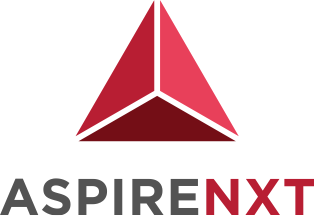AMI -Based Approach for Product Delivery on AWS Marketplace

About AWS Marketplace
The AWS Marketplace has revolutionized the way software is handled and deployed in the cloud. A key part of the platform is AWS Marketplace’s successful deployment procedure. The Amazon Machine Image (AMI) setup is a game-changing technique of deployment that tackles the issues caused by conventional software installation.
The Marketplace has made it easier for consumers to find and install corporate applications, making AMI-based deployment the preferred method. When you create an AMI (Amazon Machine Image), you’re creating a base image from which you may deploy cloud-based virtual servers. When it comes to AMI deployment, the procedure has never been easier or quicker.
Sellers of AMI-based goods produced using AWS CloudFormation templates may learn more about the process here. Use the templates to design a cluster or distributed architecture for the products, or pick other AMI combinations or product configurations. Templates for AWS CloudFormation may produce single or several AMIs, together with the necessary configuration files and Lambda functions, depending on how they are configured. We will use a single AMI to provide a solution in this post. In addition to browsing the AWS Marketplace, buyers may purchase solutions with one click and deploy those using AWS CloudFormation templates.
Why use AMI-based delivery to sell products on the marketplace?
Using an AMI-based distribution technique speeds up the setup process since it doesn’t need manual installation or extra hardware. Amazon Web services and product bundles are not supported by other techniques, such as Sage maker. The AMI-based method, which does not block any outbound connections to other Amazon Web Services provided the custom IAM (Identity and Access Management) role has the appropriate rules, is what we utilize to get around this problem.
The steps for AMI-based delivery using AWS CloudFormation are:
- Production-ready code
To complete this phase, you must create a deployable solution from the ground up, including all of the necessary code. Before being deployed as an AMI, this solution was tested in a docker environment. Amazon Textract, Amazon S3, Amazon EC2, Amazon CloudFormation, and Amazon VPC were all employed in this use case.
- EC2 instances setup for AMI creation
- The first step is to choose an Ubuntu AMI (v20.04) as your starting point.
- Make sure you choose an EC2 instance of the right size for your needs, either t2.micro (one vCPU, one GB of memory) or t2.medium (two vCPUs, four GB of memory).
- Additionally, enable Auto-assign public-IP under Configure Instance Details so that an application endpoint may be steroids for sale created later. A volume for EBS (Elastic Block Store) may also be created, and tags can be added if desired.
- A security group with an HTTP inbound rule on port 80 should be attached to enable traffic to your web app. Now that we’ve finished configuring the instance, we can go ahead and run it.
- Creation of topology diagrams
Use AWS topology diagrams to explain the architecture and security of AWS cloud-based apps. The AWS marketplace solution needs a diagram of the network topology to be presented during the solution approval process.
- Estimation of software and infrastructure pricing
An estimated infrastructure cost for each template’s default setup is required in the submission.
- Completed product form
To submit a single-AMI product, utilize the Commercial Product submission form. You will need to fill out this lengthy Excel document before submitting your final submission.
- Submitting product request
Allow three to five weeks for the request to be processed by the AWS Marketplace Management Portal, which includes:
- Review of AWS CFTs, AMI, and the AMI and CloudFormation template information for AMI and CloudFormation.
- AWS CFT has been added to the AWS Marketplace.
Conclusion:
With the AWS Marketplace, software purchases and installations are faster and more frictionless than ever before, while also providing customizable license choices and complete transparency into use charges. When it comes to product showcases, AWS Marketplace may be used to present bits of bigger product offers or to advertise a fully working product to meet the expectations of consumers.
Because it is an AWS Advanced Consulting partner, Quantiphi makes use of the AWS data and machine learning platforms to assist organizations in embarking on a data and artificial intelligence-driven digital transformation journey and realizing their full potential through cross-functional collaboration of teams.




